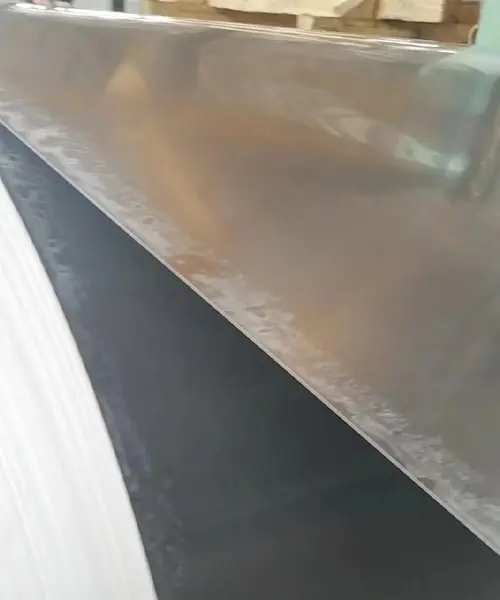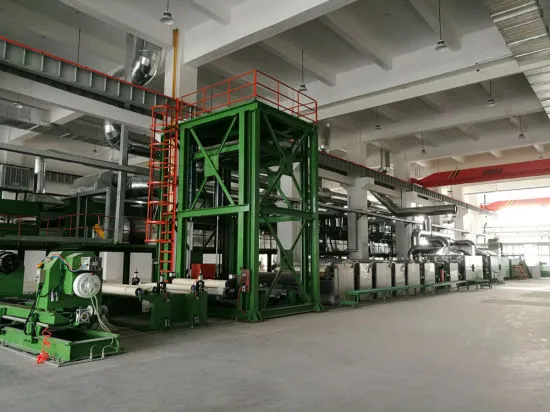
Water stains on the aluminum plate will make the surface uneven and affect the aesthetics. Water stains will also form an oxide layer on the surface of the aluminium plate, which will affect its corrosion resistance, accelerate the corrosion rate of the aluminium plate, and shorten its service life. If surface treatment of the aluminum sheet is required, such as anodizing, electrophoretic coating, etc., water stains will cause poor surface treatment effects, affect the quality and performance of the product, and increase the difficulty of cleaning.
Performance Of Water Stains On Aluminum Plate:

Appearance: water stains usually appear as round or irregular shapes with light color and smooth surface. In the sunlight or under the light, the water stains will reflect a bright light, affecting the appearance of the aluminum sheet roll aesthetics.
Location: Water stains usually appear in the recesses, edges or seams on the surface of aluminum plates, as these places are prone to water accumulation. In a prolonged humid environment, water stains may also appear anywhere on the surface of the aluminum sheets.
Quantity and Density: The quantity and density of water stains usually depend on the degree of moisture on the surface of the aluminum plate and the environment in which it is used. In humid environments, water stains may be densely distributed on the surface of aluminum plates, affecting the overall aesthetics of the aluminum plates.
Duration: Water stains usually stay on the surface of aluminum sheets plates for a period of time. If not cleaned and treated in time, the water stains may penetrate into the interior of the aluminum alloy sheets, resulting in oxidation, corrosion and damage to the surface of the aluminum roofing sheets plates, affecting the quality and service life of the aluminum plates sheets.
Causes of Water Stains on Aluminum Plates:
Hard water is a common cause of water stains on aluminum plates. Hard water contains high levels of minerals, such as calcium and magnesium, which can leave behind deposits on the surface of the aluminum. Acidic rain can also cause water stains on aluminum trailer sheets, as the acid can react with the aluminum and leave behind a residue. Humidity can also contribute to water stains, as moisture in the air can settle on the surface of the aluminum and leave behind water spots. Improper cleaning techniques, such as using abrasive cleaners or steel wool, can also cause water stains on aluminum trailer sheeting.
Scientific Truth:
Aluminum is an active metal that easily reacts with oxygen in the atmosphere to form a protective film of aluminum oxide. This aluminum oxide film protects the aluminum plate from further oxidation and corrosion. However, when there are tiny defects or damage on the surface of the aluminum plate, moisture will penetrate into these defects and react with the oxidation of the aluminum surface to form aluminum hydroxide, which will cause water stains on the sheet aluminum.
The aqueous solution contains various dissolved minerals, such as calcium, magnesium, and iron, which can penetrate into the tiny pores and defects on the surface of the aluminum mental plate through moisture. Once the water evaporates, these minerals will remain on the surface of the aluminum plate, forming water stains. This phenomenon is more common in areas with hard water because hard water contains more minerals. In addition, some pollutants such as dust, particulate matter, and atmospheric pollutants may also be present in the air in the environment. These contaminants can combine with water to form water droplets and leave water stains on the aluminum surface after it dries.
How To Prevent Water Stains On Aluminum Plates?
As a professional manufacturer of aluminum metal products, Yongsheng controls the temperature, humidity and air circulation in the production workshop and strengthens air circulation and ventilation to keep the production workshop dry. Take a variety of protective measures, such as coating the surface of the aluminum plate with a protective film to prevent the surface of the aluminum plate from being polluted and water stained. At the same time, production equipment and tools are regularly maintained and cleaned to ensure hygiene and environmental quality during the production process. Through a variety of surface treatment methods, such as removing the oxide layer, oil stains and impurities on the surface of the aluminum alloy sheet, we ensure the smoothness and flatness of the surface of the aluminum plate and avoid the occurrence of water stains

After the production of aluminum plates is completed, professional packaging materials and methods are used to package the aluminum plates to avoid contamination and water damage during transportation. At the same time, 永盛铝业 will choose appropriate transportation methods and tools to ensure that the aluminum plates are not affected by factors such as vibration and friction during transportation.
Prevention Of Water Stains On Aluminum Plates:
Regular cleaning is key to preventing water stains on aluminum plates. This can be done using a mild detergent and warm water, or a specialized aluminum cleaner. It is also important to use protective coatings, such as wax or sealant, to prevent water from penetrating the surface of the aluminum. Proper storage is also important, as storing aluminum plates in a dry, cool place can help prevent water stains from forming.
How To Remove Water Stains From Aluminium Plates:
Cleaning method:
Warm water cleaning: Use warm water and neutral detergent to gently clean the surface of the aluminium plate to remove water stains. Avoid using overheated water to prevent thermal expansion and contraction from causing damage to the aluminum plate.
Acid Cleaning:
For stubborn water stains, use a diluted acidic cleaner such as lemon juice or vinegar. However, please note that acidic cleaning agents may corrode the surface of the aluminum plate, so use it with caution and rinse it with clean water in time after cleaning.
Frosted treatment:
Use fine sandpaper or an abrasive pad to lightly sand the aluminum surface to remove water stains. When frosting, be careful not to apply excessive force to avoid scratching or damaging the surface of the aluminium plate.
Chemical dissolution:
For water stains caused by calcium, magnesium and other mineral deposits, you can try to use chemical dissolving agents to deal with them. For example, you can use acidic cleaning agents, chelating agents or specific mineral dissolving agents, and choose the appropriate dissolving agent according to the composition of the water stains. When using chemical solvents, please follow the instructions for use and pay attention to safety measures to avoid harm to the environment and human body.
Surface protection:
Applying an appropriate protective coating to the surface of aluminum alloy plates can reduce the formation of water stains. These protective coatings provide additional anti-corrosion and anti-fouling properties, making water droplets less likely to lodge on the surface and form water stains. Depending on the specific needs, the appropriate coating type can be selected, such as anodizing, spray coating, etc.
Tips for Maintaining Aluminium Plates:
- Regular cleaning: Regular cleaning of the aluminium alloy surface can effectively avoid water stains. Neutral or alkaline cleaning agents should be used when cleaning, and cleaning agents and acidic solutions containing chloride ions should be avoided, as these substances will cause corrosion and damage to the surface of the aluminum alloy plate. After cleaning, rinse thoroughly with clean water to avoid residual cleaning agent.

- Prevent the surface of the aluminum alloy plate from getting damp: The surface of the aluminum plate is prone to water stains when it gets damp. Therefore, you should pay attention to moisture-proof when storing and using the aluminum plates. Aluminum sheets plates can be stored in a dry and ventilated place to avoid prolonged exposure to moisture.
- Use waterproofing agent: You can use professional waterproofing agent to treat the surface of the aluminum plate to prevent moisture from penetrating into the interior of the alloy aluminum plates, thereby avoiding the occurrence of water stains. When using waterproofing agents, be sure to follow the instructions and avoid excessive use.
- Regular polishing: Regularly polishing the surface of the aluminum alloy plate can effectively remove the oxide layer and dirt on the surface and maintain the smoothness and brightness of the surface of the aluminum alloy plate. Professional polishing agents and equipment should be used when polishing, and avoid using too rough polishing tools to avoid damage to the surface of the aluminum alloy plate sheet.
常见问题:
How Do You Remove Hard Water Stains From Aluminum Pots?
- Using vinegar and water: Mix equal parts white vinegar and water, pour into the pot and let soak for about 30 minutes to 1 hour. Then gently wipe the inside of the pot with a sponge or soft cloth to remove water stains. Finally rinse with clean water.
- Use lemons and salt: Cut a lemon in half, sprinkle salt on the cut sides of the lemon, and wipe the inside of the aluminum pot with the lemon. The granules of salt and the acidity of lemon work together to remove hard water stains. Rinse well with clean water after cleaning.
- Using baking soda: Sprinkle an appropriate amount of baking soda onto a damp sponge or cloth, and then gently wipe the inner wall of the aluminum pot. Baking soda has stain and water stain removal properties. Rinse well with clean water after cleaning.
What Is The Best Stain Remover For Aluminum?
When choosing a product to remove stains from aluminum pans, it’s best to choose a non-acidic and non-corrosive cleaner. For example, baking soda (soda ash) is an alkaline compound with good decontamination ability and can effectively remove stains on aluminum pots.
Does Vinegar Stain Aluminum?
Yes, vinegar may cause aluminum staining. Vinegar is an acidic solution that can react with aluminum when exposed to it, causing the surface to stain or oxidize. This reaction can cause dark spots, discoloration, or other uneven changes on the aluminum surface.


